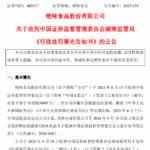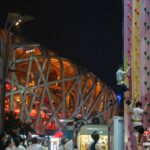On the morning of August 20, the State Council Information Office held a press conference to brief on the preparations for the military parade and answer questions. This parade marks the first military review since the comprehensive advancement of Chinese modernization entered a new journey, representing a fresh appearance of the People’s Army as it strides toward its centenary. Here are 20 key points at a glance→
The parade will last approximately 70 minutes
The parade activities will proceed in two steps: the review of troops and the march-past, lasting about 70 minutes. This parade will feature 45 formations (echelons).
Infantry formations reflect “one old and one new”
The infantry formations reflect “one old and one new.” “One old” refers to veteran units from the War of Resistance, with participants mainly drawn from units formerly known as the Eighth Route Army, New Fourth Army, Northeast Anti-Japanese United Army, and South China Guerrillas, as well as militias from provinces where anti-Japanese bases were located. “One new” refers to the new layout of military force structure, including the “three-in-one” armed forces system.
Equipment formations are organized according to joint combat readiness
The equipment formations are organized according to joint combat readiness, comprising land combat groups, maritime combat groups, air defense and anti-missile groups, information warfare groups, unmanned combat groups, logistics and support groups, and strategic strike groups.
Air echelons basically cover all main active combat aircraft types
The air echelons are organized in a modular and systematic manner, consisting of advanced early warning and command aircraft, fighter jets, bombers, transport aircraft, and others, basically covering all main active combat aircraft types, with some making their first public appearance.
Color guard bearers for the battle flag formation come from meritorious units
From countless heroes and numerous meritorious honor flags, flags of typical significance were selected from different periods, regions, and units, with color guard bearers from their respective units participating in the parade, symbolizing the continuous inheritance of the great spirit of the War of Resistance and the People’s Army’s fearlessness and perseverance.
This parade emphasizes combat readiness standards
This parade emphasizes combat readiness standards and focuses on joint requirements, using parade training to promote the development and improvement of joint operational capabilities.
The parade emphasizes scientific training, utilizing Beidou positioning and other aids
Emphasis is placed on using systems such as Beidou positioning and intelligent assessment, as well as simulation methods, to assist in basic training, formation training, air-ground coordination training, complex scenario training, contingency handling training, and training evaluation.
The new layout of military force structure is showcased for the first time in the parade
In this parade, under the guidance of the Party flag, national flag, and military flag, the reviewed formations will collectively display the military flag and the armed police force flag, marking the first concentrated showcase of the new layout of military force structure in a parade.
A large proportion of new equipment is making its debut in the parade
The weapons and equipment participating in this review are all selected from domestically produced active main combat equipment, with a large proportion of new equipment making its debut. Both ground and air equipment are systematically and mixedly organized, with some strategic heavy weapons, high-precision strike systems, unmanned and counter-unmanned equipment being publicly displayed for the first time, fully demonstrating the strong capability to defend national sovereignty, security, and development interests, as well as to maintain world peace.
All reviewed weapons and equipment are domestically produced active main combat equipment
All weapons and equipment reviewed in this parade are domestically produced active main combat equipment, representing the concentrated appearance of the new generation of military equipment since the 2019 National Day grand parade. The main characteristics include a focus on new fourth-generation equipment, showcasing systemic operational capabilities; demonstrating new domain and qualitative combat power; and displaying strong strategic deterrence capabilities.
Focus on new fourth-generation equipment
Focusing on new fourth-generation equipment, such as new tanks, carrier-based aircraft, and fighter jets, organized according to combat modules to showcase systemic operational capabilities.
Reviewed equipment features high informatization and intelligence levels
The weapons and equipment reviewed feature high levels of informatization and intelligence, fully reflecting the ability to adapt to technological development and changes in warfare forms, and to win future wars.
Equipment formations specifically include new operational power groups such



